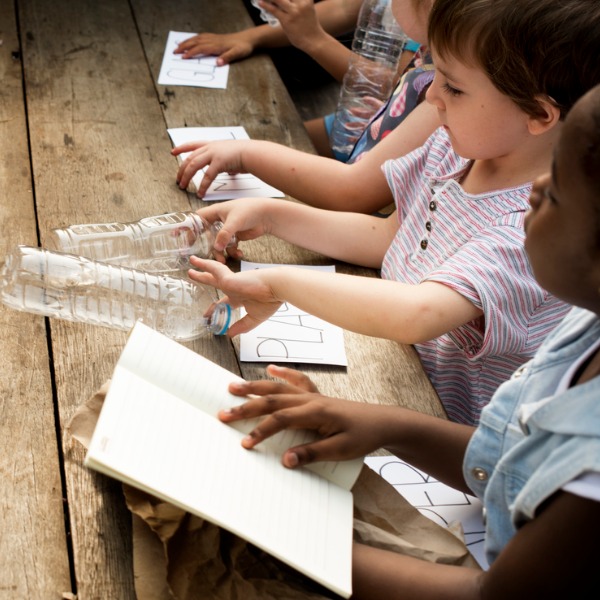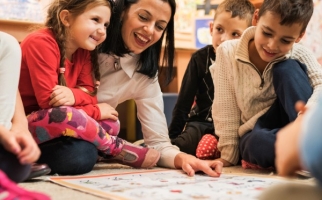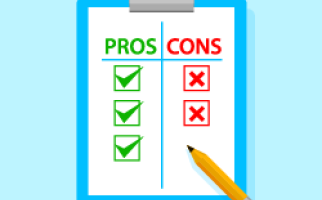Sorting & Classifying

Children sorting recycled objects (rawpixel, iStockphoto)
The process of sorting involves grouping objects or events according to their similarities whereas the process of classifying involves grouping objects or events into pre-determined groups.
Definition
The process of sorting involves grouping objects or events according to their similarities (e.g., all the cars, all the socks) whereas the process of classifying involves grouping objects or events into pre-determined groups (e.g., when an educator asks students to sort the cutlery by putting all of the forks in one group, all of the spoons in another, and all of the knives in a third group). When students sort and classify objects or events, they are determining the attributes that the objects or events share, and what attributes they don't share, or how they are alike and how they are different.
Sorting & Classifying are important because they…
- are processes that support the development of students' reasoning abilities
- support skill development and concept attainment in areas of mathematics such as geometry, pattern recognition, grouping numbers, sets and data management
- support the development of scientific concept that things can belong to and be organized into unique groups (e.g., living things, machines, types of weather, etc.)
Developing the Skill of Sorting & Classifying
Students |
Educators |
|---|---|
|
Describe things, including how they are the same and how they are different (e.g., “This is a picture of all the things I saw at the pond. This one’s an insect and it lives outside the pond. This one’s a fish and it lives in the pond.”) |
Provide multiple opportunities for students to talk about how various things are the same, and how they are different, using all appropriate senses. Model appropriate language such as “some,” “all,” “same,” “different,” etc. |
|
Sort collections of items into groups according to one self-determined attribute and/or property and talk about how they sorted/their sorting rule (e.g., when presented with a collection of cutlery: “I put all of these in one group because they are all made of metal.”) |
Have a clear understanding about the difference between “sorting” and “classifying” and how to support each in the classroom and beyond. Provide multiple opportunities for students to sort a wide variety of items and/or events, and to talk about their sorting rules in various contexts. Look for/encourage/provoke the identification of qualitative as well as quantitative attributes upon which to sort, using as many senses as appropriate. Discuss with students why they sorted the way they did, asking them to describe the common attributes of the objects in a group. |
|
Describe the attributes and/or properties that a group of things does not have (e.g., “These fasteners are all made of metal but they do not have ridges.”) |
Provide multiple and varied opportunities for students to sort objects and/or events and to describe the common attribute(s) of the objects in the group (e.g., a group of pictures of backyard birds) and ways in which the objects differ (e.g., some of the birds fly south for the winter, some do not). |
|
Sort objects and/or events according to two or more self-determined attributes and/or properties (e.g., “I put all of these pieces of material in one group because they all feel rough and they are all blue.”) |
Provide materials and objects that appeal to a variety of senses and encourage the use of descriptive vocabulary when describing the attributes of objects (e.g., rough/smooth, hard/soft, bright/dull, loud/soft, sweet/sour). |
|
Classify collections of items into groups according to attributes and/or properties provided by the educator (e.g., “Classify the pictures according to the habitat in which the animal lives: the jungle, the arctic, or the desert.”) |
Provide multiple opportunities for students to classify a wide variety of objects and/or events according to criteria you provide. Use appropriate vocabulary (e.g., “classify”) when discussing groupings with students. Discuss with students their thinking about how they classified their objects/events and why they made the decisions they did. |
|
Find examples of how classification is used in everyday life and how having things sorted and classified is helpful |
Name and notice everyday uses of sorting (e.g., “How does your family sort the laundry?”) and classifying (e.g., “How does the way a dictionary is classified make it easy to find what you want? How does the way we classify books in a library help us to find the books we are interested in?”). Ask students to provide other examples (e.g., menus in restaurants, materials in the classroom, etc.) |
Related Skills
Related Learning Strategies

